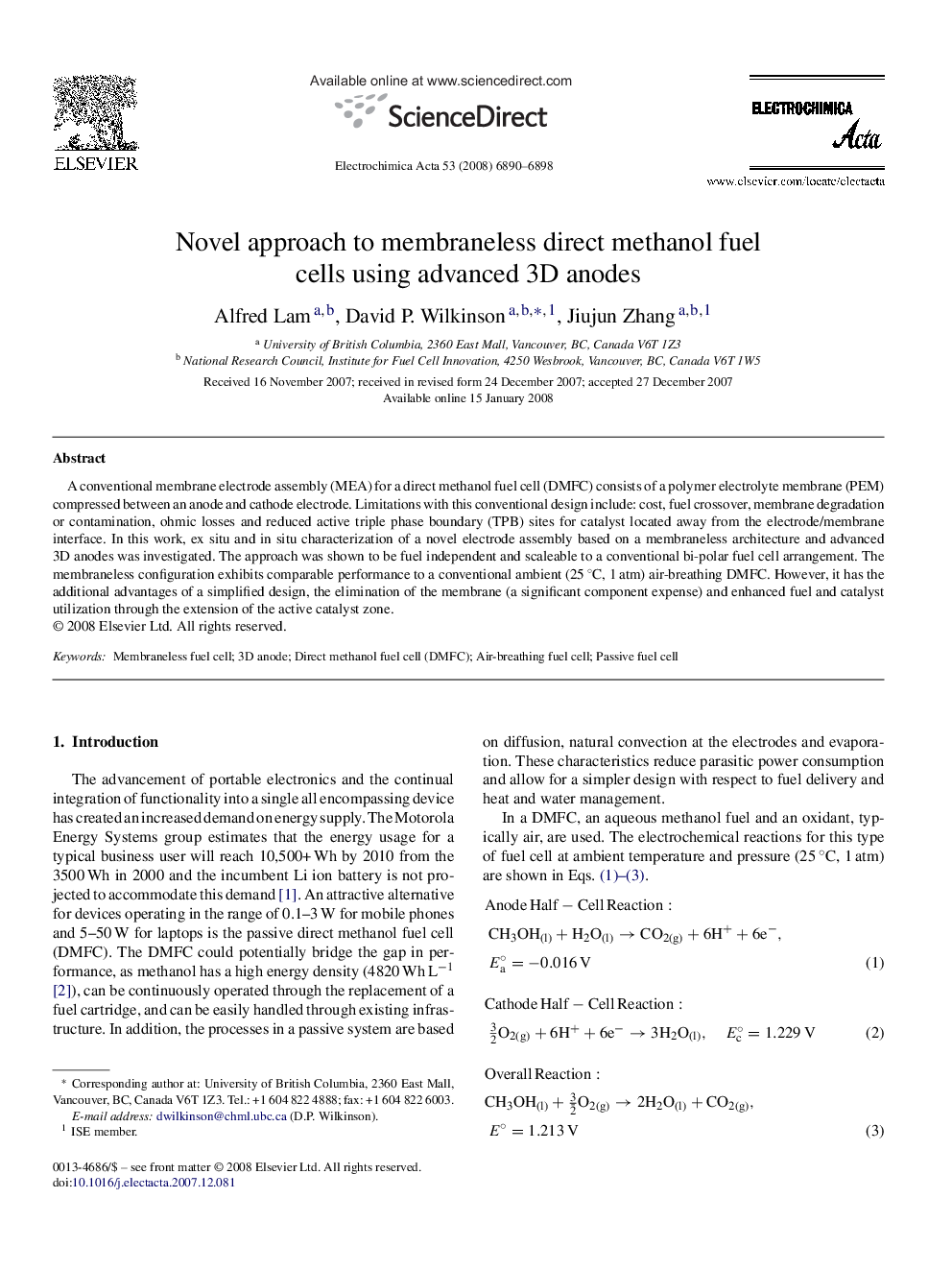| Article ID | Journal | Published Year | Pages | File Type |
|---|---|---|---|---|
| 194726 | Electrochimica Acta | 2008 | 9 Pages |
A conventional membrane electrode assembly (MEA) for a direct methanol fuel cell (DMFC) consists of a polymer electrolyte membrane (PEM) compressed between an anode and cathode electrode. Limitations with this conventional design include: cost, fuel crossover, membrane degradation or contamination, ohmic losses and reduced active triple phase boundary (TPB) sites for catalyst located away from the electrode/membrane interface. In this work, ex situ and in situ characterization of a novel electrode assembly based on a membraneless architecture and advanced 3D anodes was investigated. The approach was shown to be fuel independent and scaleable to a conventional bi-polar fuel cell arrangement. The membraneless configuration exhibits comparable performance to a conventional ambient (25 °C, 1 atm) air-breathing DMFC. However, it has the additional advantages of a simplified design, the elimination of the membrane (a significant component expense) and enhanced fuel and catalyst utilization through the extension of the active catalyst zone.
